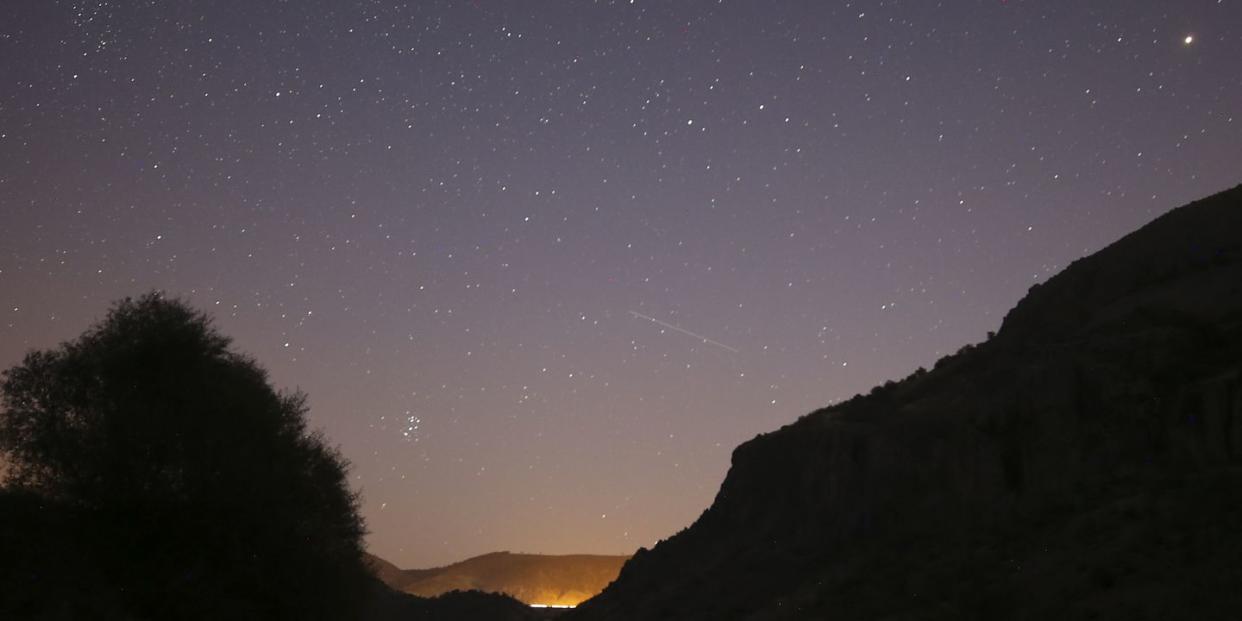A "Christmas Star" Will Light Up the Sky This Month for the First Time In 800 Years

It’s an excellent month to be a stargazer! Not only will December have the largest meteor shower of 2020, but there will be a total solar eclipse and kissing planets. While this year has been rather dreadful, these celestial events will end it on a high note. Here are the major happenings to watch out for in the night sky this month.
The largest meteor shower of 2020: The Geminid
On the night of Sunday, December 13, and into the early hours of Monday, December 14, the Geminid meteor shower will reach its peak. It may be possible to see 150 meteors per hour this year thanks to a moon-free sky, according to EarthSky. The best time to watch–from anywhere in the globe–is around 2 a.m. from an area where there’s a dark, open sky. The meteors will appear quickly and look white. Bonus: You might also be able to catch a few meteors on the nights leading up to the shower’s peak.
The only total solar eclipse of the sun in 2020
The new moon moves directly in front of the sun on December 14, making it this year’s only total solar eclipse. Unfortunately, it will only be visible in South America–specifically, Chile and some parts of Argentina, according to Time and Date. Some parts of southern South America, southwest Africa, and Antarctica may be able to see a partial solar eclipse depending on the weather. The good news is you can live stream it online if you don’t live in one of those areas. The maximum eclipse will happen around 11 a.m. ET.
The first Jupiter-Saturn “kissing planets” since the millennium
On December 21 in what is called a great conjunction, or "kissing planets," Jupiter and Saturn will be extremely close together (0.1 degree apart to be exact), EarthSky reports. The planets will come so close to one another that they will actually appear as a "double planet," which looks to us on Earth like one super bright point of light. Historically, this phenomenon has been known as the "Christmas Star" or "Star of Bethlehem."
This incredible conjunction will be the closest one since 1623—800 years ago!—which was just 14 years after Galileo made his own telescope. Oh and along with the great conjunction, December 21 is also the date of the December solstice.

